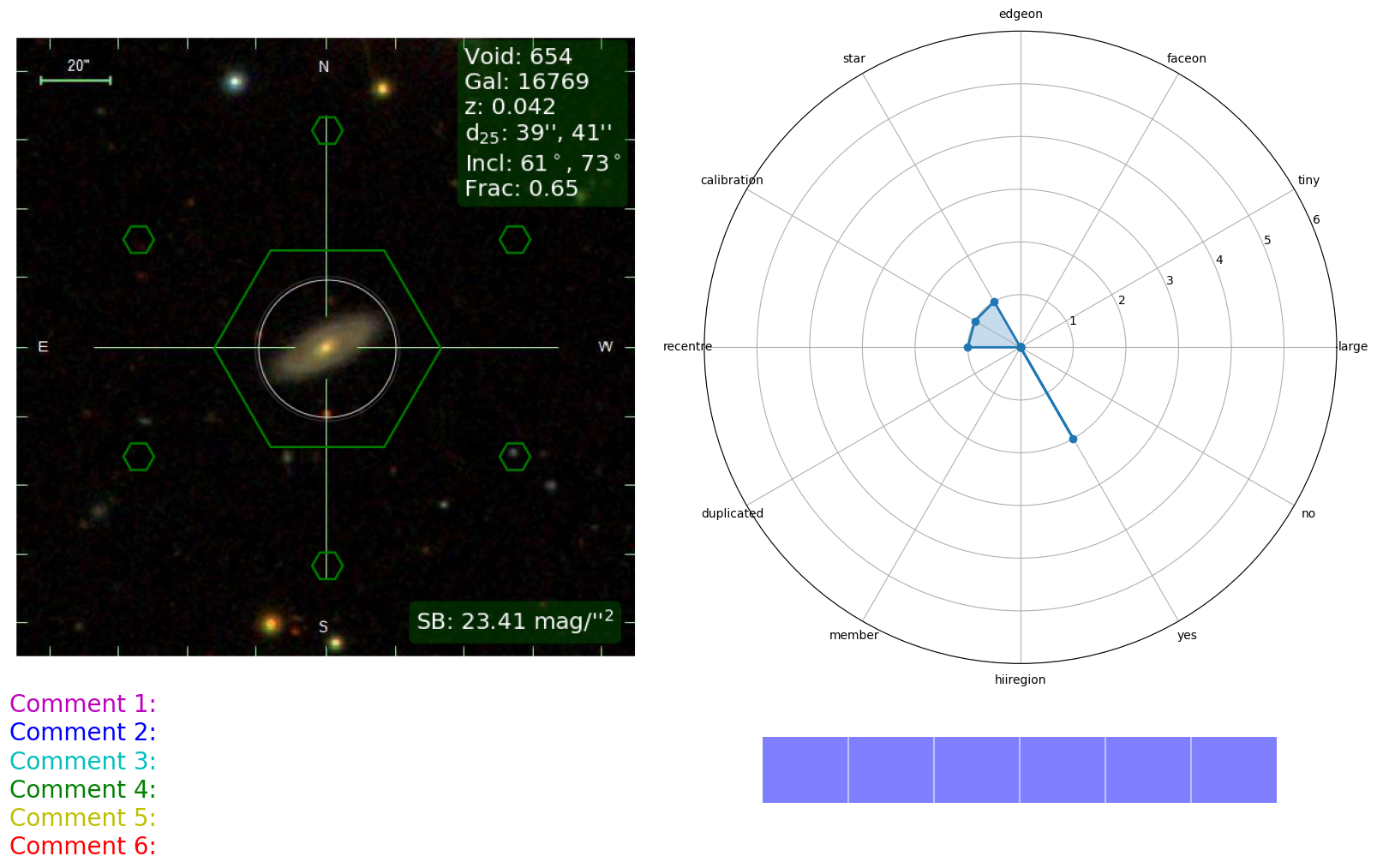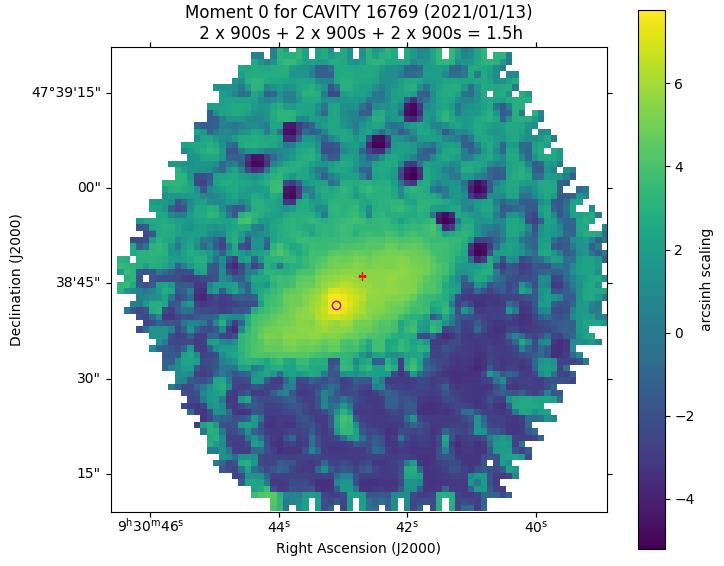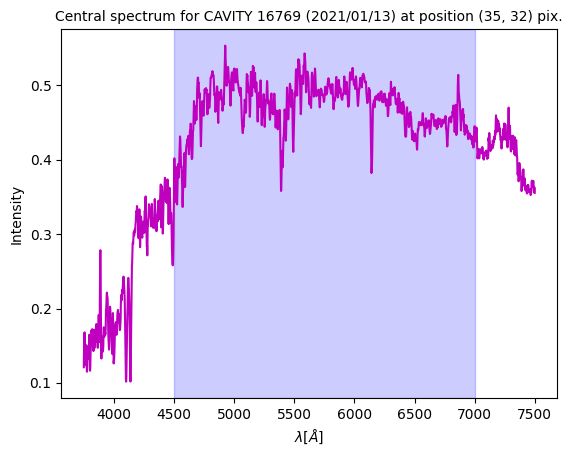Observations
Instrumental set-up:
CAVITY observations officially started on January 2021. The observations are performed with the Postdam Multi Aperture Spectrograph (PMAS, Roth et al. 2005) in the PPaK mode (Verheijen et al. 2004). The PPAK fiber bundle consists of 382 fibers of 2.7 arcsec diameter each (see Fig. 5 in Kelz et al. 2006). The science fiber are comprised of 331 fibers in an hexagonal configuration covering a field-of-view of 7422×6422, with a filling factor of ~60%. Six independent fiber bundles of 6 fibers each conform the sky background sampling. These bundles are located along a circle ~72 arcsec from the center of the instrument field-of-view. We have opted for a three-position dithering pattern to have a 100% filling factor on the galaxy aperture, an observing strategy already successfully tested during the CALIFA survey (Sánchez et al. 2012).
All the galaxies will be observed using the V500 grating. This grating has a nominal resolution of λ/∆λ ≈ 850 at ≈ 5000 Å with a FWHM of about 6.0 Å. For the brightest and largest objects, around 50% of the sample, we will also observe the objects using the grating V1200. This grating has a nominal resolution of λ/∆λ ≈ 1650 at ≈ 4500 Å with a FWHM of about 2.7 Å. Exposure times vary between 1.5 and 3.0 hours of total integration.
Status of the project:
As of December 2023 more that 80 night were awarded to the project translating into data cubes for more than 240 CAVITY galaxies. A first data release will be open to the community in July 2024, offering datacubes, deep imaging and CO spectra for a sample of around 100 galaxies.


